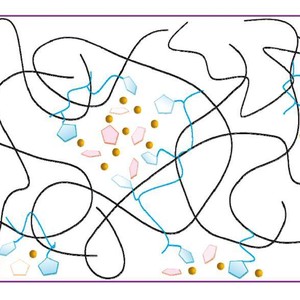Further Investigation of the Intermolecular Interactions and Component Distributions in a [Bmim][BF4]-based...
Citation
Jingya Shi, Peiyi Wu*, and Feng Yan*. Further Investigation of the Intermolecular Interactions and Component Distributions in a [Bmim][BF4]-Based Polystyrene Composite Membranes Using Two-Dimensional Correlation Infrared Spectroscopy. Langmuir 2010, 26, 11427-11434.
Abstract
The intermolecular interaction and distribution of components in [Bmim][BF4]-based polystyrene composite membrane which is composed of 1-butyl-3-methylimidazolium tetrafluoroborate ([Bmim][BF4]), poly(1-(2-methyl acryloyloxyundecyl)-3-methylimidazolium bromide) (poly(MAUM-Br)) and polystyrene is investigated by in situ Fourier transform infrared spectroscopy (FTIR) and two-dimensional correlation infrared spectroscopy (2DIR) in this study. A proposed model about the structure of this composite material is presented, and a sketch map about the local distributions of components is provided. In this model, alkyl chains in [Bmim][BF4], poly(MAUM-Br), and polystyrene in this system were supposed to form a polymeric network through aggregation or copolymerization. Cations of ionic liquids separate into the polymer network, while anions are kept mainly through the Coulomb force and partially by the hydrogen bonding between cations and anions. To support this model, FTIR has provided some hints on the π−π interaction existing in this complex material between the imidazole ring of ionic liquids and the benzene ring of polystyrene, based on the discovery of the shifts of IR absorption bands assigned to the C−C stretching vibrational mode. The sequential order of the responses from different chemical groups toward the variation of temperature is calculated by 2DIR, and the results suggest how different components distributed in this [Bmim][BF4]-based polystyrene composite membrane.


